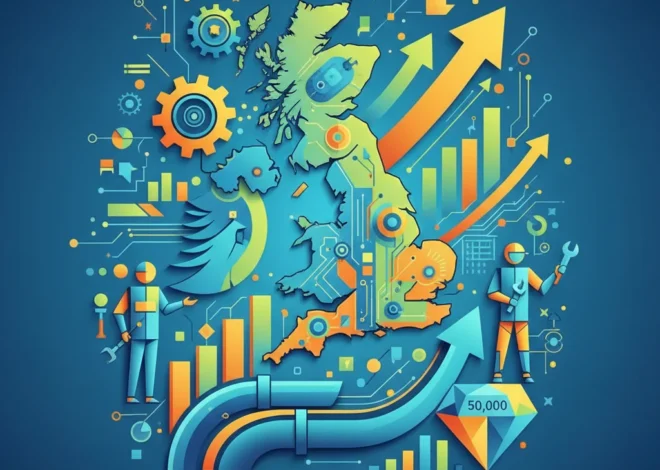
The Dollar’s Resurgence: Is Your Portfolio Ready for the Next Market Shockwave?
In the grand theater of global finance, some actors command the stage with such constant presence that they can fade into the background. For months, the US dollar has been one such actor—a quiet giant amidst the clamor of inflation debates, stock market rallies, and geopolitical tensions. But what happens when the giant stirs? A recent pickup in the dollar’s strength is sending subtle but significant tremors through the financial world, and savvy investors are taking note. If this momentum builds, it could trigger a frantic scramble to reset portfolios, separating the prepared from the paralyzed.
For much of the past year, currency markets have been relatively calm. This stability has been a welcome reprieve, allowing investors to focus on other drivers of return. However, this period of low volatility may be coming to an end. The US dollar, the undisputed king of the global financial system, is showing signs of a powerful comeback. This isn’t just a minor fluctuation; it’s a potential paradigm shift with far-reaching consequences for every asset class, from the S&P 500 to emerging market debt and even the price of oil. Understanding the drivers and implications of this looming dollar rally is no longer an academic exercise—it’s an urgent strategic necessity for anyone involved in investing, banking, or international business.
The Gathering Storm: Why the Dollar is Waking Up
The US dollar’s value doesn’t move in a vacuum. Its strength is a reflection of the US economy’s health relative to the rest of the world, and right now, the narrative of American economic exceptionalism is gaining traction. While other major economies are grappling with stagnation or slower growth, the US continues to post surprisingly robust economic data. This divergence is the primary engine behind the dollar’s recent ascent.
Several key factors are converging to create this perfect storm for a stronger dollar:
- Interest Rate Differentials: The US Federal Reserve has maintained a more hawkish stance on inflation than many of its counterparts, like the European Central Bank or the Bank of Japan. Higher interest rates in the US attract foreign capital, as investors seek higher returns on their cash. This influx of capital increases demand for dollars, pushing its value up. As one analyst noted, the market is beginning to price in a “higher for longer” interest rate environment in the US, a sentiment that directly fuels the dollar’s appeal (source).
- Robust Economic Performance: From strong labor market reports to resilient consumer spending, the US economy has consistently defied recession forecasts. This strength makes the US a more attractive destination for investment compared to regions facing more significant economic headwinds.
- Safe-Haven Demand: In times of global uncertainty, investors instinctively flock to the US dollar as a safe harbor. Ongoing geopolitical conflicts and economic instability in other parts of the world only serve to enhance the dollar’s status as the ultimate financial refuge.
–
This confluence of factors has pushed the DXY index, which measures the dollar against a basket of other major currencies, to notable highs. The quiet period is over, and the era of a strengthening dollar appears to be upon us.
The Ripple Effect: How a Strong Dollar Reshapes the Investment Landscape
A rising dollar is not just a concern for currency traders. It’s a powerful force that sends waves across the entire global economy, creating distinct winners and losers. For unprepared investors, it can be a source of significant portfolio pain. Here’s a breakdown of the wide-ranging impacts:
Impact on the Stock Market
A strong dollar is a double-edged sword for the US stock market. On one hand, it can signal a strong domestic economy, which is good for companies focused on the US market. On the other hand, it creates significant headwinds for large multinational corporations. Companies like Apple, Microsoft, and Coca-Cola generate a substantial portion of their revenue overseas. When the dollar strengthens, their foreign earnings translate back into fewer dollars, hurting their bottom line and potentially leading to downward earnings revisions. Analysts have pointed out that a sustained dollar rally could be a major drag on S&P 500 profits in the coming quarters.
Pressure on Emerging Markets
Perhaps the most vulnerable players in a strong-dollar environment are emerging market (EM) economies. Many of these countries and their corporations have borrowed heavily in US dollars. As the dollar strengthens, the local currency cost of servicing and repaying this debt skyrockets. This can lead to financial distress, capital flight, and, in severe cases, sovereign debt crises. The financial stability of entire nations can be threatened by a sustained dollar surge.
Commodities and Inflation
Most major commodities, including oil, gold, and copper, are priced in US dollars. When the dollar strengthens, these commodities become more expensive for buyers using other currencies. This typically leads to a decrease in demand and a fall in commodity prices. For the US, this can have a disinflationary effect, as the cost of imported goods and raw materials falls. However, for the rest of the world, it can exacerbate inflation as the cost of essential dollar-priced imports rises.
The table below summarizes the potential winners and losers in a rising dollar environment, providing a clear overview for strategic portfolio adjustments.
| Asset Class / Sector | Potential Impact of a Strong Dollar | Rationale |
|---|---|---|
| US Multinational Stocks | Negative | Foreign earnings translate into fewer dollars, hurting revenue and profit margins. |
| US Small-Cap / Domestic
|


